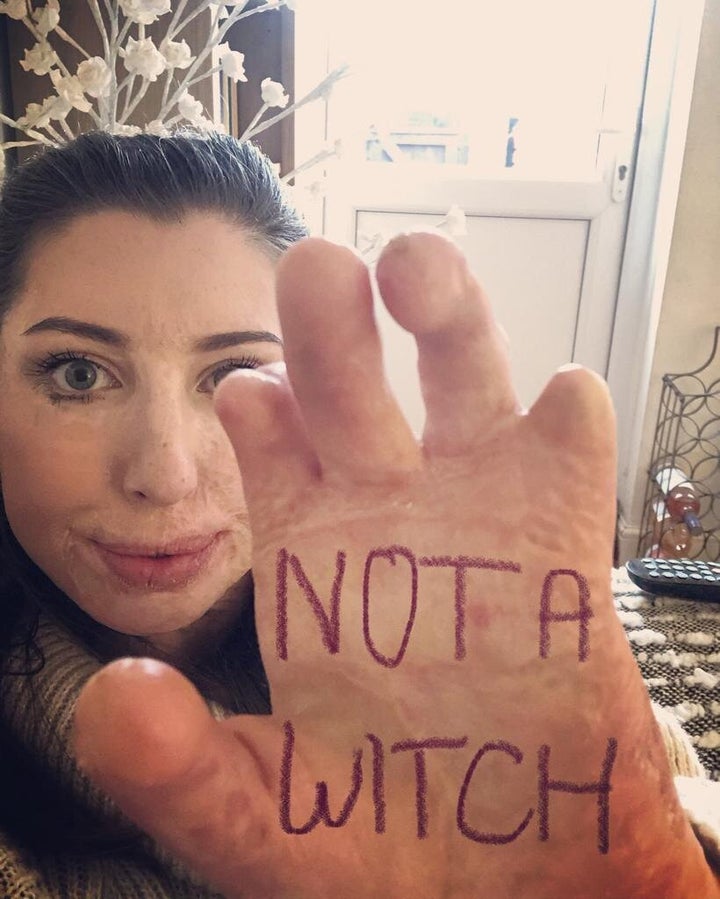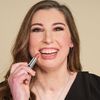
At 18, my whole life was turned upside down after being set alight in a coach crash. I sustained 96% burns across my face and body, spent three months in a coma, and went through more than 200 operations. It changed everything, including the way I looked forever.
I have spent years working on my physical abilities, getting stronger and adapting to my ‘new normal’ with time. But the psychological recovery of what happened to me and how I looked took far longer and continues to evolve. It can be hard to love and embrace your differences when every time you step out of the house, you are stared at. Or when strangers’ eyes linger for that extra few moments, children ask ‘what is wrong with you?’, and parents usher them away apologetically rather than educating them. I now love my scars, my limb difference and who I am, but many obstacles could have prevented this.
When I saw the movie trailer and promotions for the latest adaptation of Roald Dahl’s The Witches, featuring Anne Hathaway, my heart dropped when I saw the new ‘look’ of the film. This new version of the film has decided that to make their depiction of the witches even scarier than previous movies, or than the original Roald Dahl descriptions, they’ll add in some extra facial scarring, and remove some fingers from the villains’ hands. These special additions were all made so children can be even more terrified of the ‘baddie’ in the film.
“I struggle to think of a hero, a love interest or even a funny side-kick who happens to have some kind of visible difference”
Inevitably, there were social media responses telling those of us who have challenged the filmmakers that we are ‘over-sensitive’ or ‘stifling creativity’. Some suggested we ‘get over it’. But for anyone living with a visible difference, this is just the latest use of a lazy stereotype using scarring and limb difference as a shorthand for villainy.
You might have noticed that the Bond villain always sports some ‘terrifying’ facial scar, while the hero, despite his many scrapes and near-misses, somehow miraculously remains visibly unscathed. And once you start thinking about this, you’ll recall The Joker, Freddy Krueger and even the Lion King’s evil Uncle Scar, as just some of the characters who have their nastiness played out on their skin. What I find even scarier is that I struggle to think of a hero, a love interest or even a funny side-kick who happens to have some kind of visible difference.
I remember, the day I woke up in hospital with scars covering my body, having lost fingers on my left hand and my hair, wondering what my future would be like. I remember looking through magazines and turning to the television and films to find positive role models, but they just weren’t there. I was filled with uncertainty and questioning whether I could ever be the hero of my own story.
I had good reason to worry. Research from Changing Faces found that one in three say that they feel depressed, sad or anxious as a result of having a visible difference; and six in ten people have experienced hostile behaviour from strangers simply because of how they look.
For me, it was actually social media that provided the inspiration I needed. There’s a whole community of people sharing their lives with a disability online. It motivated me to do the same, so I began telling my story too, showing off my scars to become the role model I never saw. Alongside charities, like Changing Faces, I advocate and campaign for equal representation in film, tv and advertising so everyone can feel included and accepted in society.

People started listening, and including models with visible differences in advertising. I’m proud to work alongside four other amazing women with visible differences and model with companies like Avon UK as part of their #PledgeToBeSeen partnership with Changing Faces. We’ve been the faces of perfume and make-up campaigns, showing that there are many ways to look and feel beautiful. Others are stepping up too, and I’m delighted when I see someone with vitiligo, alopecia, or a limb difference in a brand campaign.
Television programmes are starting to include storylines and characters of all abilities, and prime time shows like Strictly Come Dancing are championing inclusion, helping millions of families have the discussion that difference can be celebrated. When I see these shows I feel fantastic too, and I have loved seeing more and more people represented in positive ways in culture and media.
I’ve got to be honest, my struggles haven’t been connected to bullying, though I can’t help but wonder if I’d had my scars when I was at school if I’d be able to write that same statement. So many people I’ve met are still dealing with the impact of the appearance-related bullying they experienced.
“My challenge to the creative teams, the filmmakers and the TV executives is this: can’t you find another way to demonstrate someone’s character beyond their looks?”
That’s why I’m speaking out. That’s why I daubed #NotAWitch on my hand and took to social media to challenge Warner Bros. Enough children stare at me and fear me because of my scars and hand without another movie telling them I’m scary too. I can only imagine what the children and young people with visible differences are feeling when they head back into school knowing their peers are watching the latest film that shows their scars and differences as evil. Will ‘witch’ be the latest taunt they have to hear? I really hope not.
So my challenge to the creative teams, the filmmakers and the TV executives is this: can’t you find another way to demonstrate someone’s character beyond their looks, and could you think about showing difference as a positive, celebrating individuality?
Catrin Pugh is an ambassador for Changing Faces, the UK’s leading charity for everyone who has a mark, scar or condition that makes them look different. Follow her on Twitter at @CatrinPugh
Have a compelling personal story you want to tell? Find out what we’re looking for here, and pitch us on ukpersonal@huffpost.com
